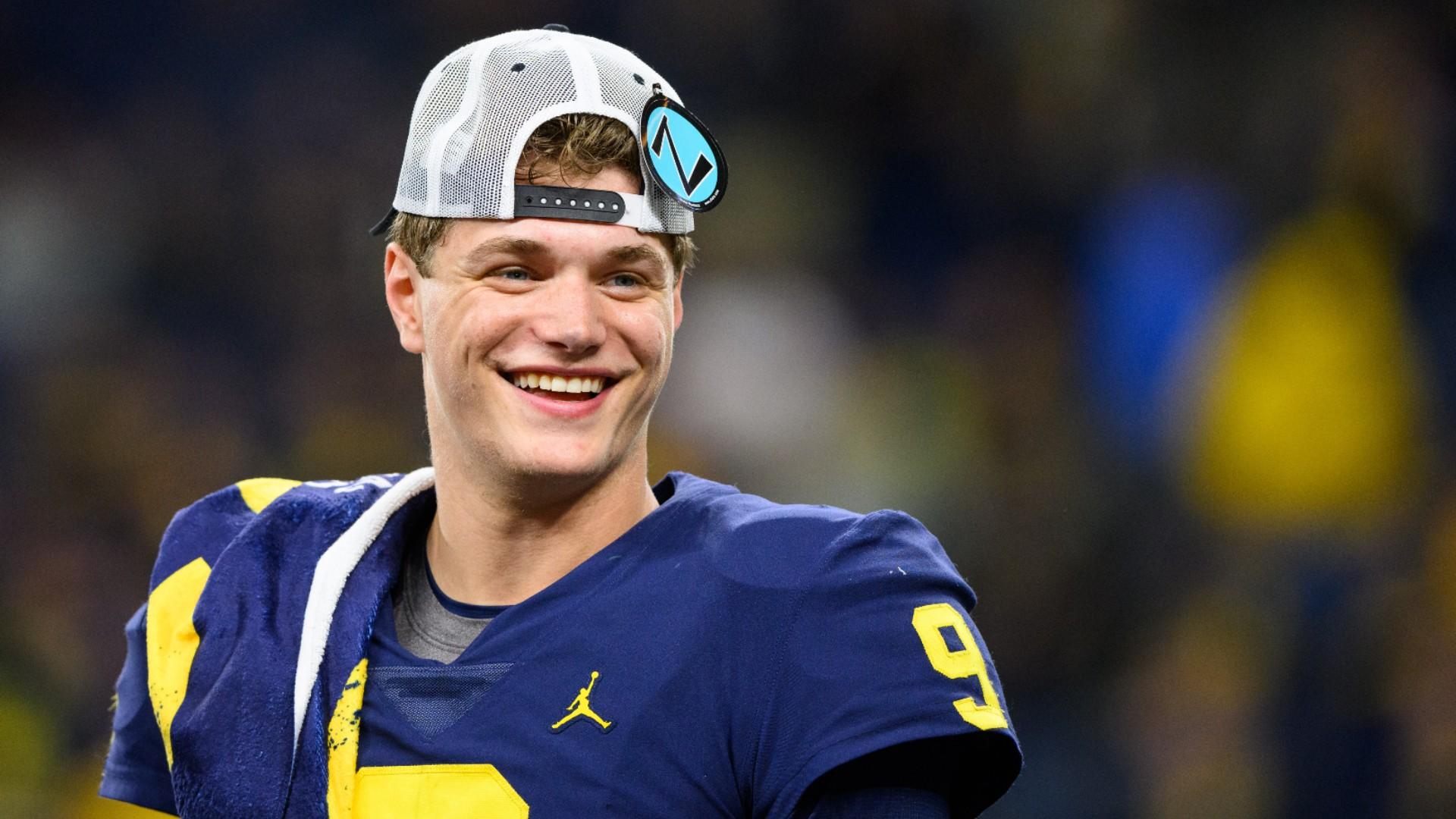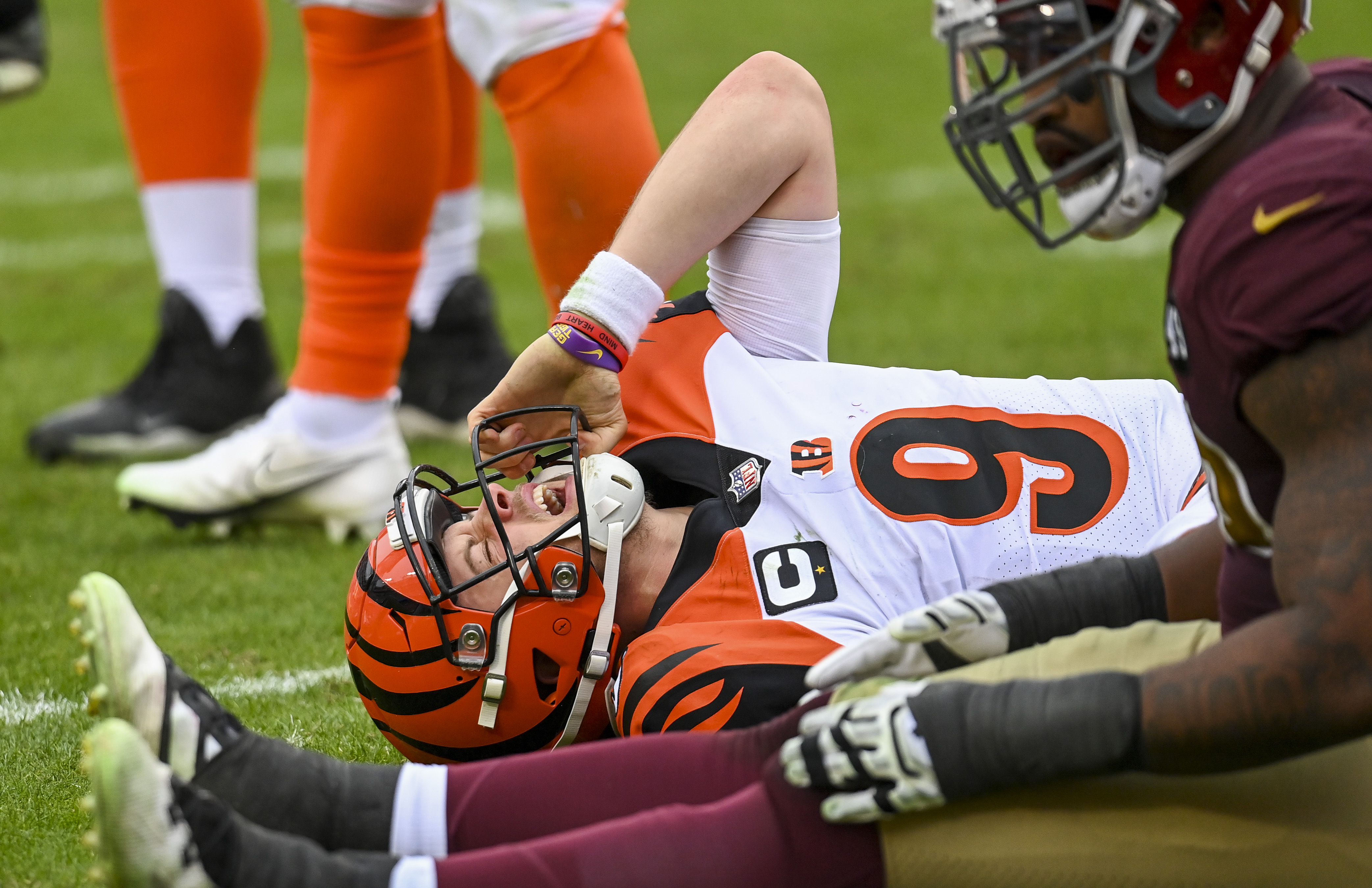JJ McCarthy’s Knee Injury and Surgery: Jj Mccarthy Knee Surgery

JJ McCarthy, the talented quarterback for the University of Michigan Wolverines, has endured a challenging season due to a significant knee injury. The injury, which occurred during the 2023 season, forced him to undergo surgery, putting his future on the field in question. This exploration delves into the details of his injury, the surgical procedure, and the potential impact on his career.
The Nature of JJ McCarthy’s Knee Injury
JJ McCarthy sustained a significant knee injury during the 2023 season, though the exact date and specifics of the injury have not been publicly disclosed. However, based on reports, it is believed that the injury involved a tear in the anterior cruciate ligament (ACL), a crucial ligament responsible for stabilizing the knee joint. This type of injury is common in athletes, particularly those who engage in high-impact sports like football.
Timeline of Events Leading to Surgery, Jj mccarthy knee surgery
Following the injury, McCarthy underwent a series of assessments and consultations with medical professionals. The initial focus was on conservative treatment options, such as rest, ice, compression, and elevation (RICE) therapy, as well as physical therapy aimed at strengthening and stabilizing the knee joint. However, the severity of the injury and the lack of significant improvement with conservative measures led to the decision for surgical intervention.
Surgical Procedure
The surgical procedure performed on JJ McCarthy’s knee involved a reconstruction of the torn ACL. The surgery typically entails harvesting a tendon graft from another part of the body, such as the hamstring or patellar tendon, and using it to replace the torn ACL. This graft is then secured to the femur (thigh bone) and tibia (shin bone) using specialized screws and anchors. The goals of the surgery are to restore stability to the knee joint, prevent further damage, and facilitate a full recovery for McCarthy.
Impact on JJ McCarthy’s Career

The knee surgery will undoubtedly cast a long shadow over JJ McCarthy’s career, a shadow that may linger for a while, influencing his athletic trajectory. The road to recovery is paved with uncertainty, and its impact on his performance, both immediate and long-term, remains a question mark.
Potential Impact on Athletic Performance
The surgery itself is a significant hurdle, but the true test lies in the rehabilitation process. This period is crucial for regaining strength, flexibility, and the explosiveness that defines a quarterback’s game. The extent to which he can return to his pre-injury form depends on the success of this arduous journey.
The road to recovery is a long one, requiring dedication and resilience.
While a successful recovery could see him return to the field with the same level of athleticism, there’s always a chance of lingering effects, such as reduced mobility or a lingering fear of reinjury. This could potentially impact his ability to make quick cuts, change direction with agility, or throw with the same power and accuracy.
Potential Risks and Complications
The surgery itself carries inherent risks, as with any medical procedure. There’s a chance of complications such as infection, blood clots, or nerve damage. The rehabilitation process also presents its own set of challenges, with the potential for setbacks or re-injury.
The recovery process can be unpredictable, with setbacks and complications a constant possibility.
The recovery period could also lead to muscle atrophy or joint stiffness, further hindering his athletic performance. The mental toll of the injury and rehabilitation process should not be underestimated either, as it could impact his confidence and mental fortitude.
Pre-Injury Performance vs. Projected Performance
JJ McCarthy’s pre-injury performance showcased his athleticism, mobility, and arm strength. He demonstrated the ability to escape pressure, extend plays, and make accurate throws on the run. However, his post-recovery performance may be hampered by the limitations imposed by the injury.
The potential limitations imposed by the injury could hinder his ability to perform at his pre-injury level.
He may have to rely more on his arm strength and accuracy, and his ability to extend plays with his legs might be compromised. While his athleticism and talent are undeniable, the long-term impact of the injury on his overall performance remains a significant concern.
Rehabilitation and Recovery Process

The road to recovery for JJ McCarthy after his knee surgery is a demanding journey that requires dedication, patience, and a comprehensive rehabilitation plan. This plan will guide him through various stages, focusing on regaining strength, flexibility, and stability, ultimately enabling him to return to the field.
Stages of Rehabilitation
The rehabilitation process for a knee injury typically involves several distinct stages, each with specific goals and milestones. These stages are designed to progress gradually, ensuring the injured knee heals properly and McCarthy’s athletic performance is restored.
- Immediate Post-Surgery Stage (Weeks 1-4): This stage focuses on reducing inflammation, controlling pain, and promoting initial healing. It involves rest, ice, compression, and elevation (RICE) protocol, along with pain management through medication. Passive range of motion exercises, such as ankle pumps and quadriceps sets, are introduced to maintain flexibility and prevent muscle atrophy.
- Early Rehabilitation Stage (Weeks 4-8): As inflammation subsides, the focus shifts to regaining range of motion and initiating controlled movements. This stage includes active range of motion exercises, strengthening exercises for the quadriceps, hamstrings, and calf muscles, and proprioceptive exercises to improve balance and coordination. Walking with crutches or a cane is gradually introduced as tolerated.
- Intermediate Rehabilitation Stage (Weeks 8-12): This stage emphasizes strengthening and functional exercises, focusing on building endurance and agility. Exercises include squats, lunges, and plyometrics, which mimic the demands of football. The intensity and duration of these exercises are gradually increased as McCarthy’s knee gains strength and stability.
- Advanced Rehabilitation Stage (Weeks 12-16+): This final stage focuses on returning to full athletic activity. McCarthy will engage in sport-specific drills and practice, gradually increasing the intensity and duration of training. He will work closely with the team’s medical staff to ensure his knee is fully recovered and he is ready to compete at the highest level.
Physical Therapy Protocols
Physical therapy plays a vital role in JJ McCarthy’s recovery, providing personalized guidance and support throughout the rehabilitation process. A skilled physical therapist will assess his progress, tailor treatment plans, and provide hands-on therapy to address specific needs.
- Manual Therapy: Physical therapists may use manual techniques to address soft tissue restrictions, improve joint mobility, and reduce pain. These techniques may include massage, stretching, and joint mobilization.
- Therapeutic Exercises: The therapist will prescribe a variety of exercises to strengthen muscles, improve flexibility, and enhance coordination. These exercises may include resistance bands, weights, and bodyweight exercises.
- Proprioceptive Training: This type of training focuses on improving balance, coordination, and proprioception, which is the body’s awareness of its position in space. Examples include balance boards, wobble boards, and agility drills.
- Functional Training: As McCarthy progresses, the therapist will incorporate functional exercises that mimic the demands of football. These exercises may include running, jumping, cutting, and pivoting drills.
Insights from Medical Professionals and Athletes
“Rehabilitation after knee surgery is a marathon, not a sprint. It takes time, patience, and a strong commitment to the process. Listen to your body, work closely with your physical therapist, and don’t rush your recovery.” – Dr. David Chao, orthopedic surgeon
“The most important thing is to stay positive and focused on your goals. It’s easy to get discouraged, but remember that you’re not alone in this journey. There are many resources available to help you, and you can overcome this challenge.” – Tom Brady, NFL quarterback
“Rehabilitation after a knee injury was one of the toughest things I’ve ever had to go through. It required a lot of hard work, but it was worth it in the end. I came back stronger than ever, and I know JJ can do the same.” – Adrian Peterson, NFL running back
Jj mccarthy knee surgery – JJ McCarthy’s knee surgery is a significant event for the University of Michigan football program, as his health directly impacts their offensive strategy. While McCarthy’s recovery is paramount, the news also raises questions about the future of the Wolverines, a team known for their gritty, physical style of play.
The team’s success hinges on a strong offensive line, and McCarthy’s return will be crucial for the Wolverines to maintain their dominance, especially against formidable opponents like the minnesota vikings. With the Vikings’ renowned defense, McCarthy’s recovery and his ability to lead the offense will be crucial in any potential matchup.
Fans are eagerly awaiting news of McCarthy’s progress, hoping for a swift and full recovery.
JJ McCarthy’s knee surgery was a significant event in his athletic career, causing a ripple effect throughout the football world. The procedure, which aimed to address a persistent knee issue, was a crucial step in his recovery process. The impact of the surgery and his subsequent rehabilitation can be explored in detail by visiting jj mccarthy knee surgery , a comprehensive resource dedicated to his journey back to the field.
